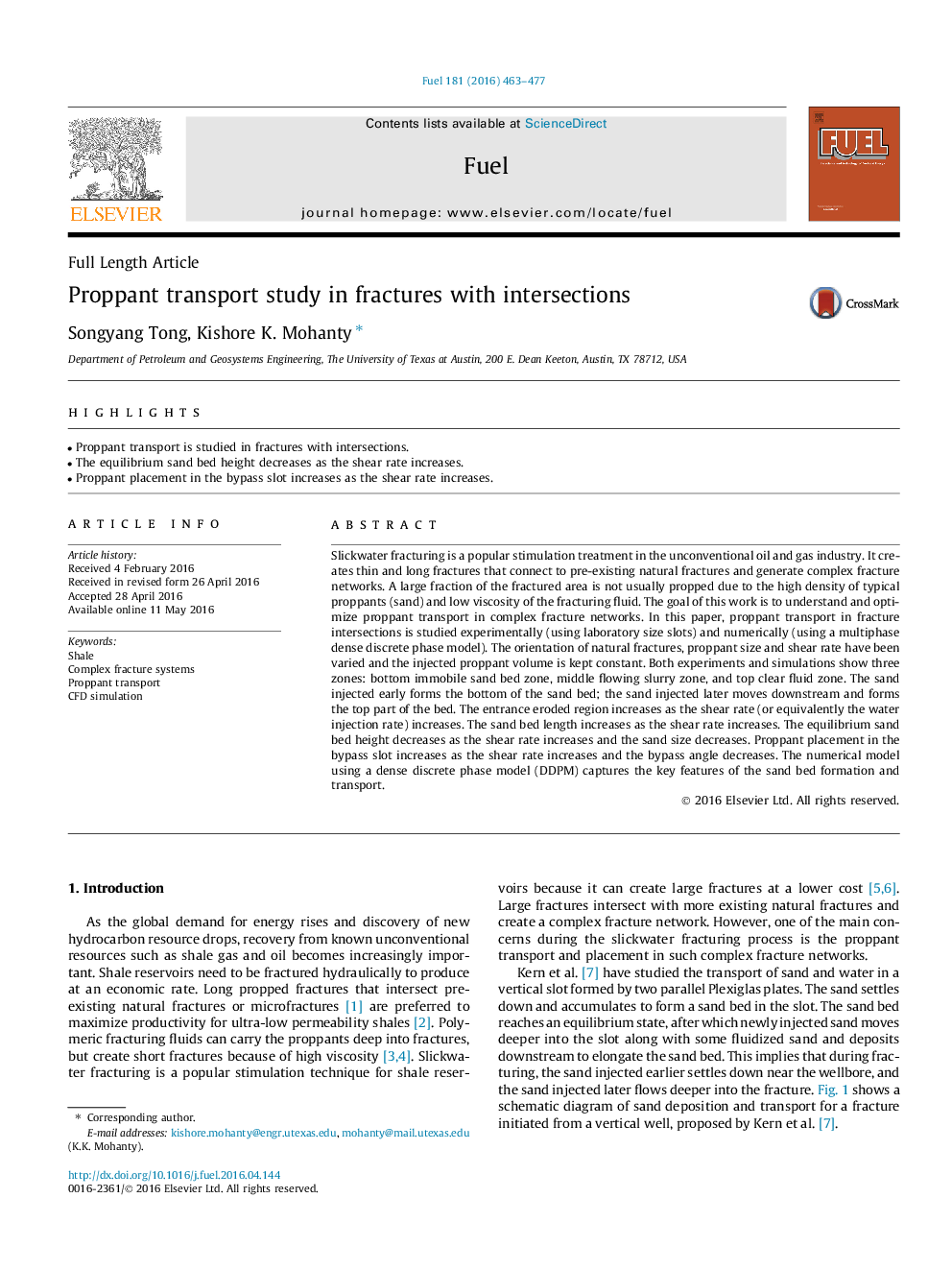| کد مقاله | کد نشریه | سال انتشار | مقاله انگلیسی | نسخه تمام متن |
|---|---|---|---|---|
| 204935 | 461093 | 2016 | 15 صفحه PDF | دانلود رایگان |
• Proppant transport is studied in fractures with intersections.
• The equilibrium sand bed height decreases as the shear rate increases.
• Proppant placement in the bypass slot increases as the shear rate increases.
Slickwater fracturing is a popular stimulation treatment in the unconventional oil and gas industry. It creates thin and long fractures that connect to pre-existing natural fractures and generate complex fracture networks. A large fraction of the fractured area is not usually propped due to the high density of typical proppants (sand) and low viscosity of the fracturing fluid. The goal of this work is to understand and optimize proppant transport in complex fracture networks. In this paper, proppant transport in fracture intersections is studied experimentally (using laboratory size slots) and numerically (using a multiphase dense discrete phase model). The orientation of natural fractures, proppant size and shear rate have been varied and the injected proppant volume is kept constant. Both experiments and simulations show three zones: bottom immobile sand bed zone, middle flowing slurry zone, and top clear fluid zone. The sand injected early forms the bottom of the sand bed; the sand injected later moves downstream and forms the top part of the bed. The entrance eroded region increases as the shear rate (or equivalently the water injection rate) increases. The sand bed length increases as the shear rate increases. The equilibrium sand bed height decreases as the shear rate increases and the sand size decreases. Proppant placement in the bypass slot increases as the shear rate increases and the bypass angle decreases. The numerical model using a dense discrete phase model (DDPM) captures the key features of the sand bed formation and transport.
Journal: Fuel - Volume 181, 1 October 2016, Pages 463–477
